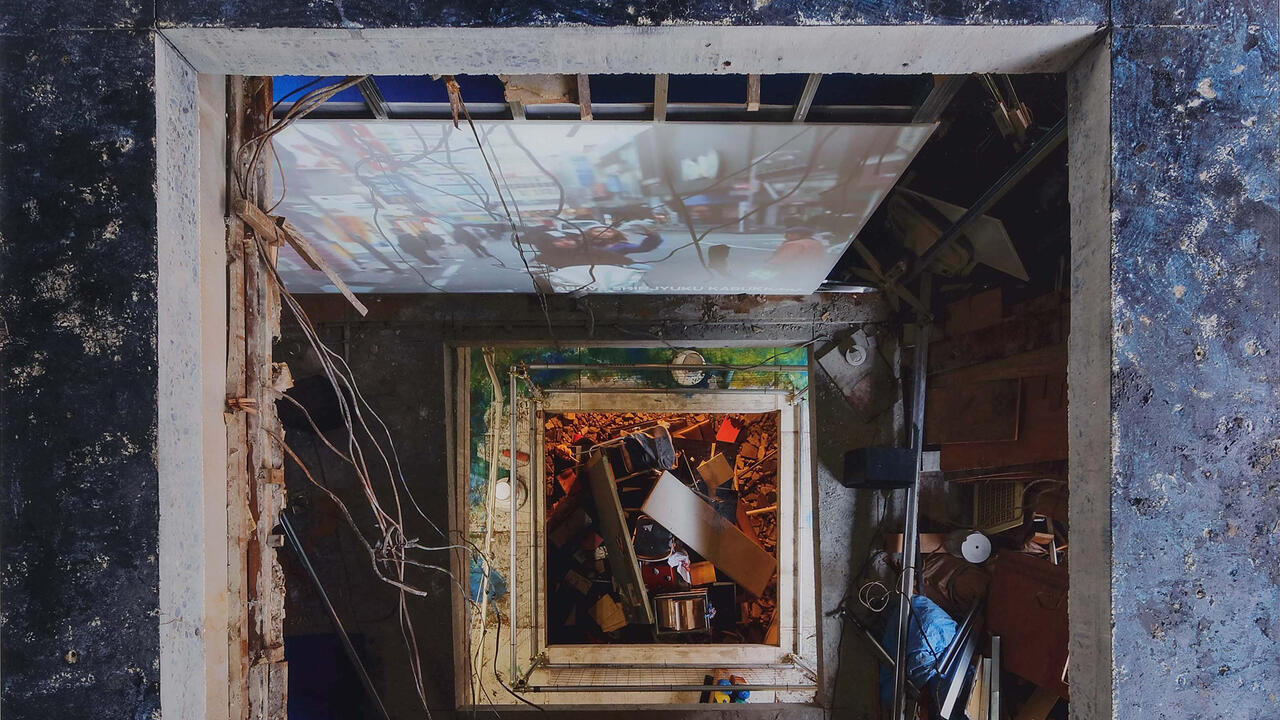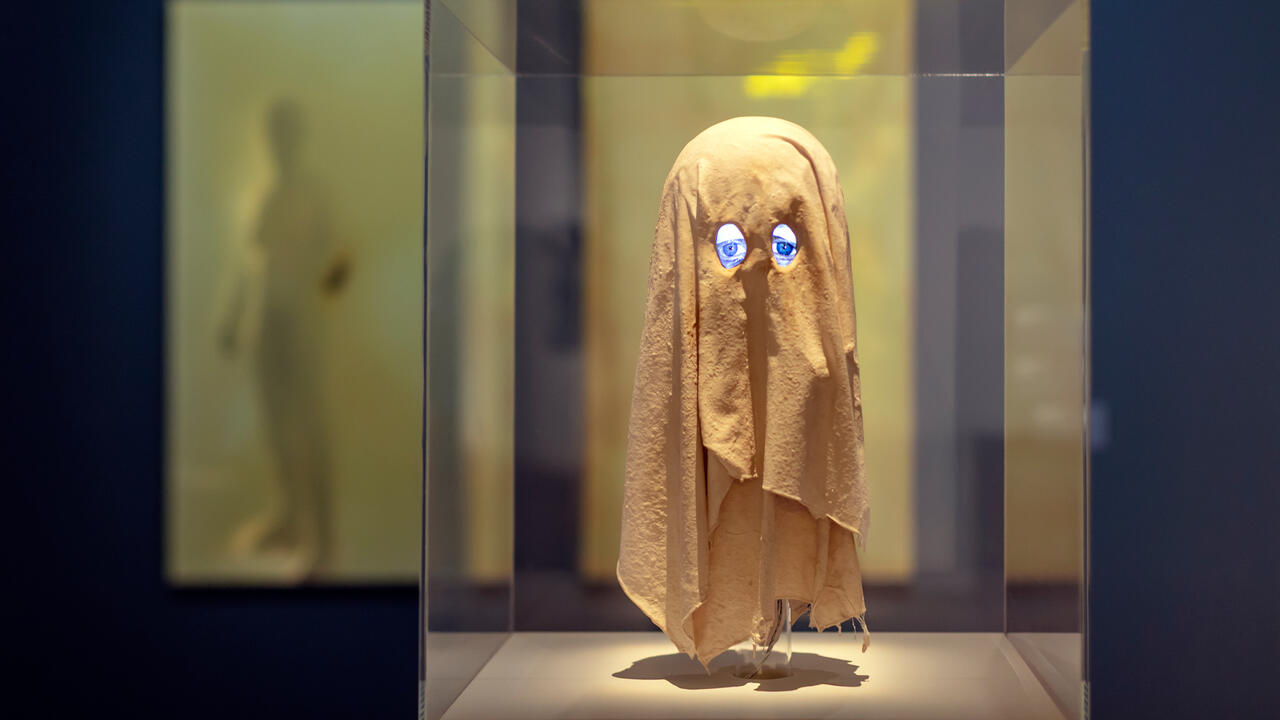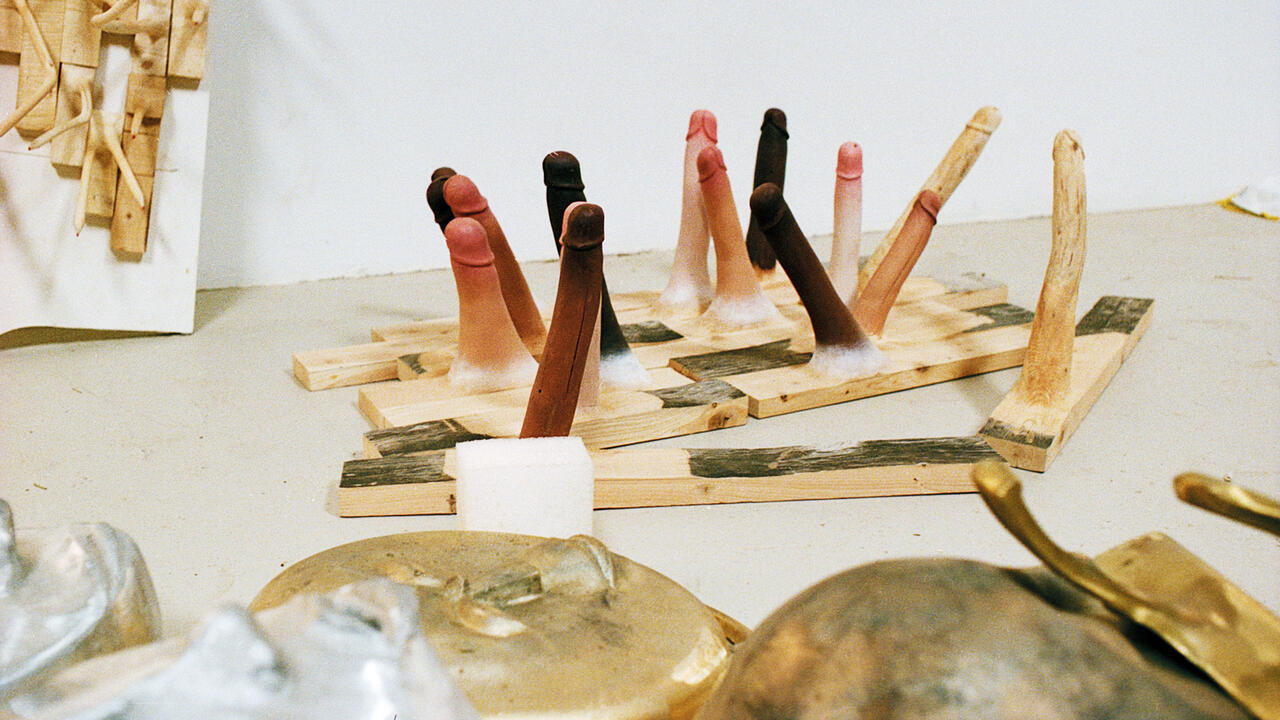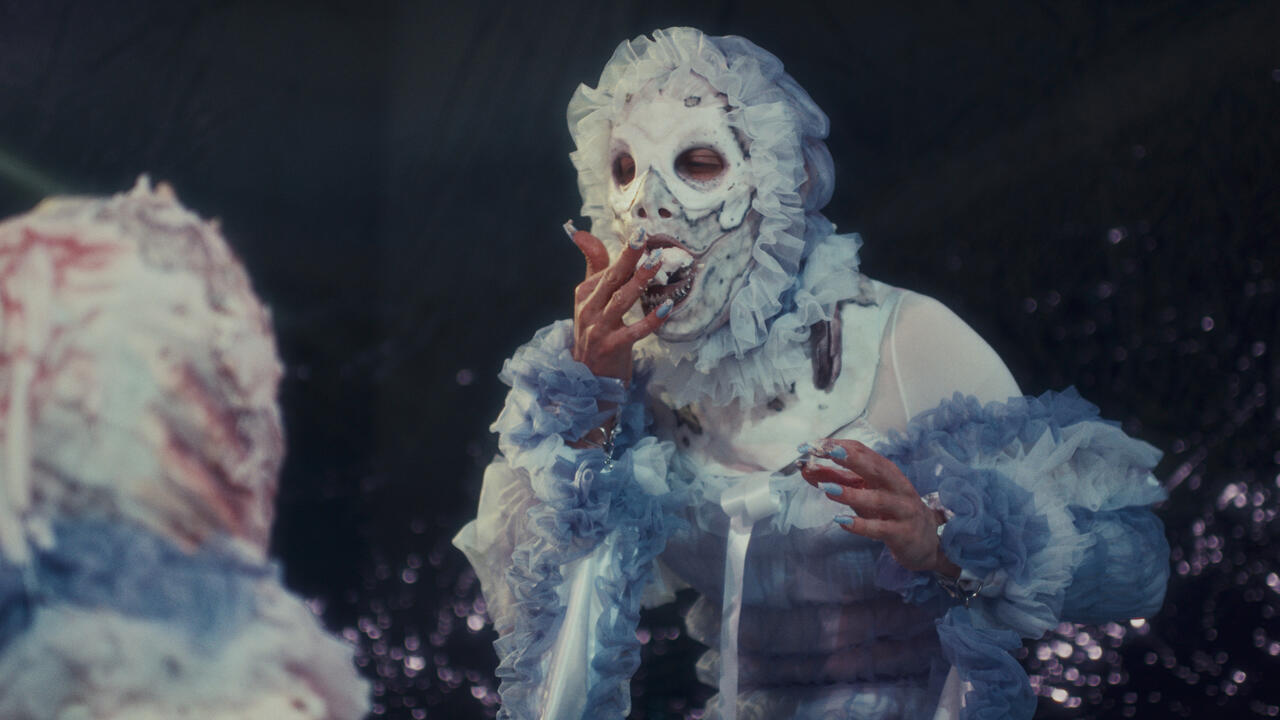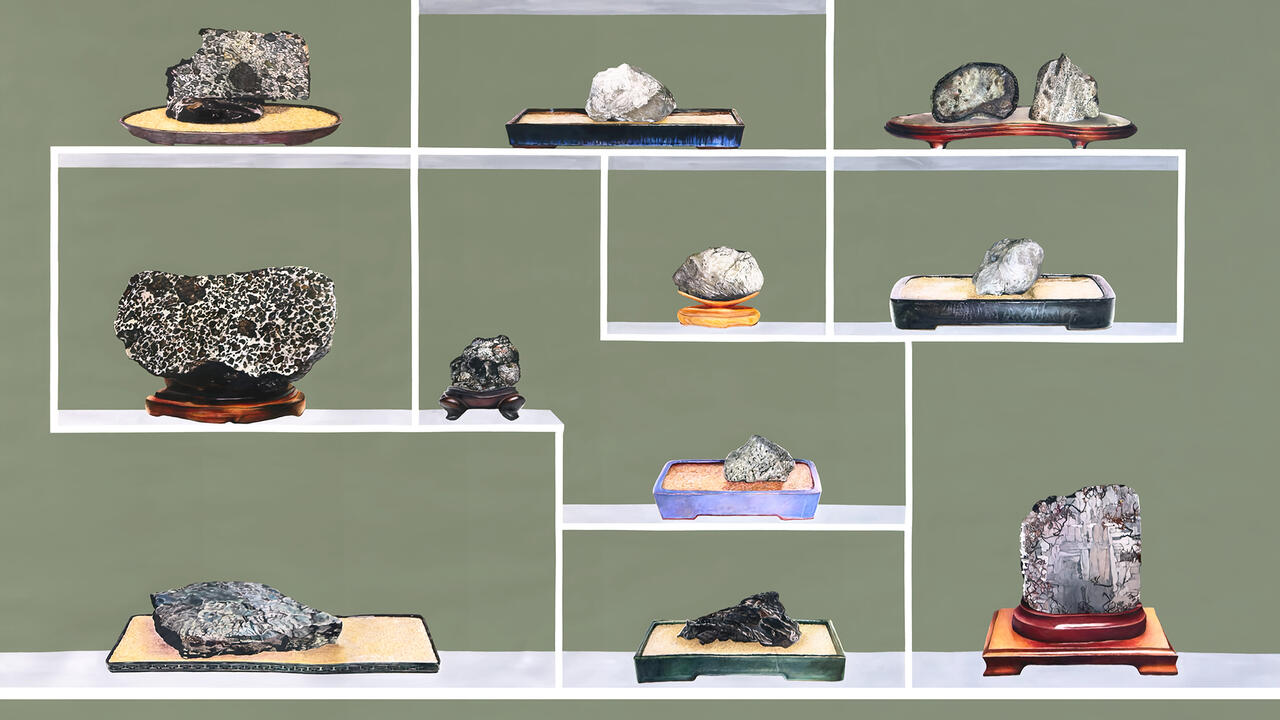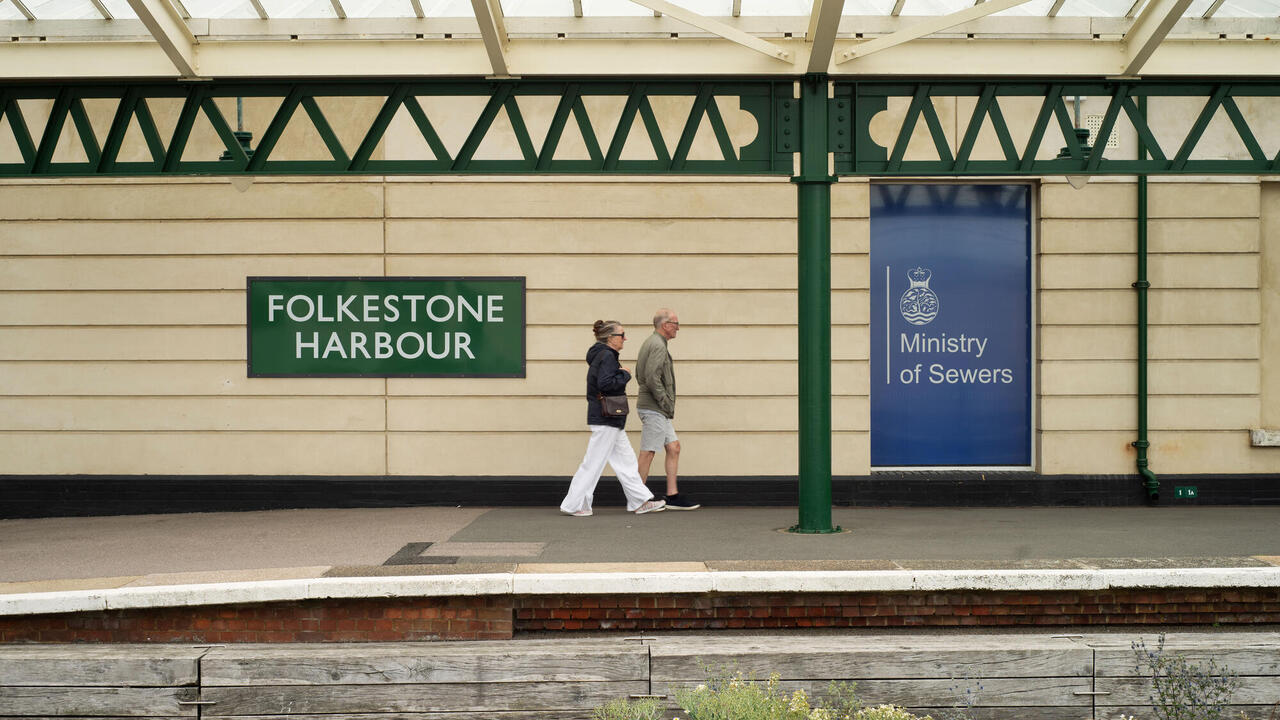Critic’s Guide: Berlin
A guide to the best current shows across the German capital
A guide to the best current shows across the German capital


Symonds, Pearmain, Lebon, ‘Iron Lady’
Isabella Bortolozzi
29 April – 15 July 2017
Isabella Bortolozzi gallery seems to have been turned into a set for a perfume ad from the 1980s. Lipstick-red curtains and oversized posters cover the walls depicting a naked female model pleasuring herself while holding a Chanel No.5-like perfume bottle. Symonds Pearmain is a fashion collaboration by designer Anthony Symonds and stylist Max Pearmain and the perfume, ‘Iron Lady’ – which gives the show its title (actually half Chanel No. 5 and half YSL Rive Gauche) – alludes to that equally ’80s Iron Lady of British politics, Margaret Thatcher. The perfume campaign, featuring the porn star Stoya shot by photographer Tyrone Lebon, is displayed in a variety of formats, from printed images to films, and shown alongside Symonds and Pearmain’s new collection brown glamour A/W (2017) arranged on mannequins, an actual Chanel No.5 perfume bottle and a cacophonous sound piece revealing the perfume’s chemical composition. Symonds and Pearmain have created a fitting universe for their products to inhabit: a place of eroticism and excess where female power is rendered absolute by taking the sexually charged scenes usual to fashion and perfume advertising to their most explicit.

Peter Wächtler and Marguerite Humeau
Schinkel Klause / Schinkel Pavillon
3 June – 30 July 2017
The Schinkel Pavillon’s two spaces play host to Marguerite Humeau’s and Peter Wächtler’s respective solo presentations. Upstairs, in Schinkel’s main rotunda space, Humeau’s v-shaped formation of metallic rails – along with a sound installation – recalls the barriers found in front of airport escalators to prevent the entry of large-sized luggage. Titled ‘RIDDLES’, the artist is using ideas of gate-guarding and crowd filtering inspired by the mythical Sphinx, who would devour those attempting to pass who failed to solve her riddle.

Downstairs in Schinkel Klause – Schinkel’s basement – a new stop-motion film by Peter Wächtler depicts a grotesque anthropomorphic half-moon, sporting a pipe and hat. The moon tells tales and sings songs about value systems. Along the corridor leading to Schinkel Klause, a series of ceramic sculptures show armchair-bound moles with opened books resting on their laps. The blind animals read attentively, acting as custodians to the room and, in a sense, as a witty pun on the legibility of the work itself. Although completely different, both presentations deal with ideas of gate-keeping, tracing how contemporary systems of control concern both access of movement and access to knowledge.
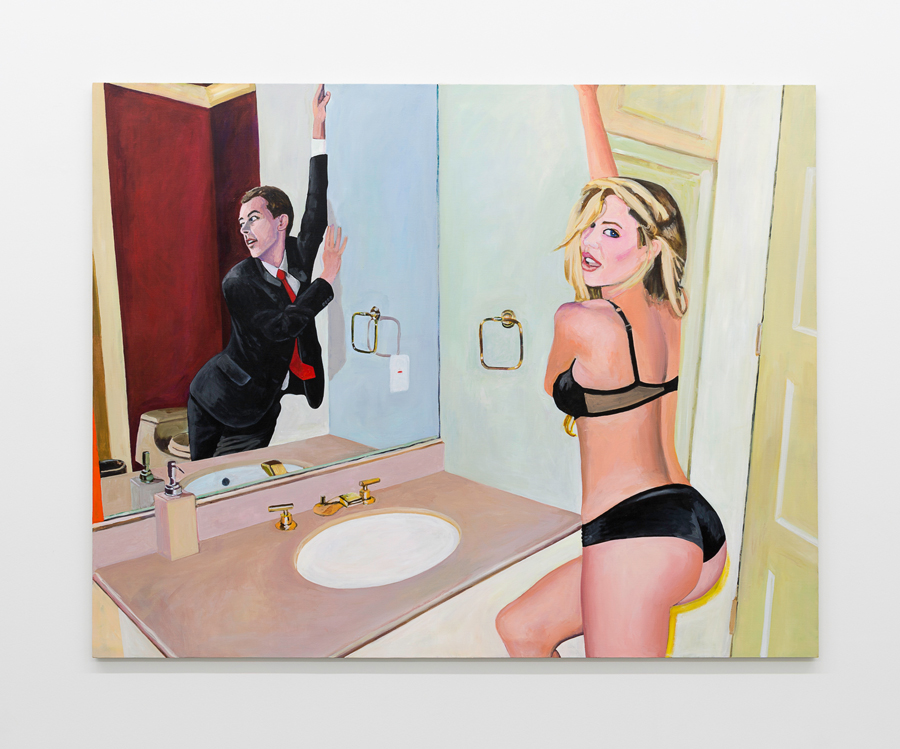
Merlin Carpenter, ‘Business Women’
Galerie Neu
13 June – 22 July 2017
Contrasting with previous abstract projects – such as his 2015 series ‘Middle Career Paintings’ – Merlin Carpenter’s new series of paintings ‘Business Women’ (2017) vividly depict familiar situations in a figurative fashion. In every one of the paintings the same young, wealthy, entrepreneur or politician-like character called Graham appears confronting, in reflection, a different scantily-clad female. In this Dynasty-esque universe created by Carpenter, the trim-suited Graham represents the male, business-and-money-minded corollary to our Narcissistic age of social media self-representation. The female protagonists – Charlotte, Tallullah, Victoria, Grace and Ashleigh – pictured sleazily from behind, seem tied in a double bind of body conscious image expectation and good-old fashioned object of desire. The negative space, here represented by the mirror, might be comparable to those phone screens in which most of us get drowned producing to-be-exploited content.

Ragna Bley, ‘Lay Open’
Frankfurt am Main
25 June – 23 July 2017
Ragna Bley’s paintings look organic, decayed and abject, yet their titles suggest something far more psychological is at play: see Conflicting Evidence (2015) or It took a week to remember what I already know (2015). An amalgam of personal experiences, anecdotal events and decomposed materials serve as levers for the Swedish-born, former Royal College of Art student who, in anticipation of her Frankfurt am Main’s solo show ‘Lay Open’ (2017), has given some clues as to her thought process. The press release describes an ‘unnaturally green’ grass; a corrupted perception of nature framing a situation in which a person – anonymous to us, yet very close to Bley – introduces a new bag used to accelerate a dead body’s decomposition. The obvious existential drama of the situation breaks down through an image of the comic, ghost-like creature Hattifattener and is followed by laughs, revealing how entangled and blurred nature and artifice, as well as superficiality and depth are in one’s existence.

Sarah Morris, ‘Cloak and Dagger’
Capitain Petzel
21 June – 26 August 2017
The departure point for ‘Cloak and Dagger’ is the new production Finite and Infinite Games (2017): a film juxtaposing a conversation between the artist Sarah Morris and the film-maker and philosopher Alexander Kluge, with images of the then not-yet opened Elbphilarmonie in Hamburg. Kluge, who was sent by Theodor Adorno to work with Fritz Lang to realize his vision of becoming a filmmaker, has long been a collaborator and friend of Morris. In ‘Cloak and Dagger’, painting and film – which Morris sees as two sides of the same coin – propose the idea of politics, movie making, philosophy, painting and architecture as entangled, abstract entities. Finite and Infinite Games’s formal composition is extended in the Capitain Petzel’s gallery space through colourful lines and other geometric shapes on canvases, movie posters and on the walls, finding in the emblematic modernist architecture, designed by Josef Kaiser and Walter Franek, a kindred spirit for the exhibition.

Anca Munteanu Rimnic, ‘Simulanta’
PSM
23 June – 29 July 2017
Romanian-born artist Anca Munteanu Rimnic moved to Germany with her parents when she was six years old and ever since she has struggled to reconcile both realities she belongs to. Acknowledging her past while coming to terms with her present and future has become the main subject in her work – something which has been materialized through the constant use of traditional Romanian materials and themes. In previous works, Munteanu Rimnic has used kilim carpets as an inspiration for creating bleached ceramic puzzles, resembling digital pixels. Bleaching traditional elements from her background’s folklore is a symbol of erasing certain memories and breaking free of connotations. For her latest project ‘Simulanta’, a series of auto-portraits is presented along with various sculptures, in the form of photographs, japanese ink on stitchery and hand-woven wool works. Through her work, Munteanu Rimnic looks for her own path, not just in her art practice, but through her own personal experience.
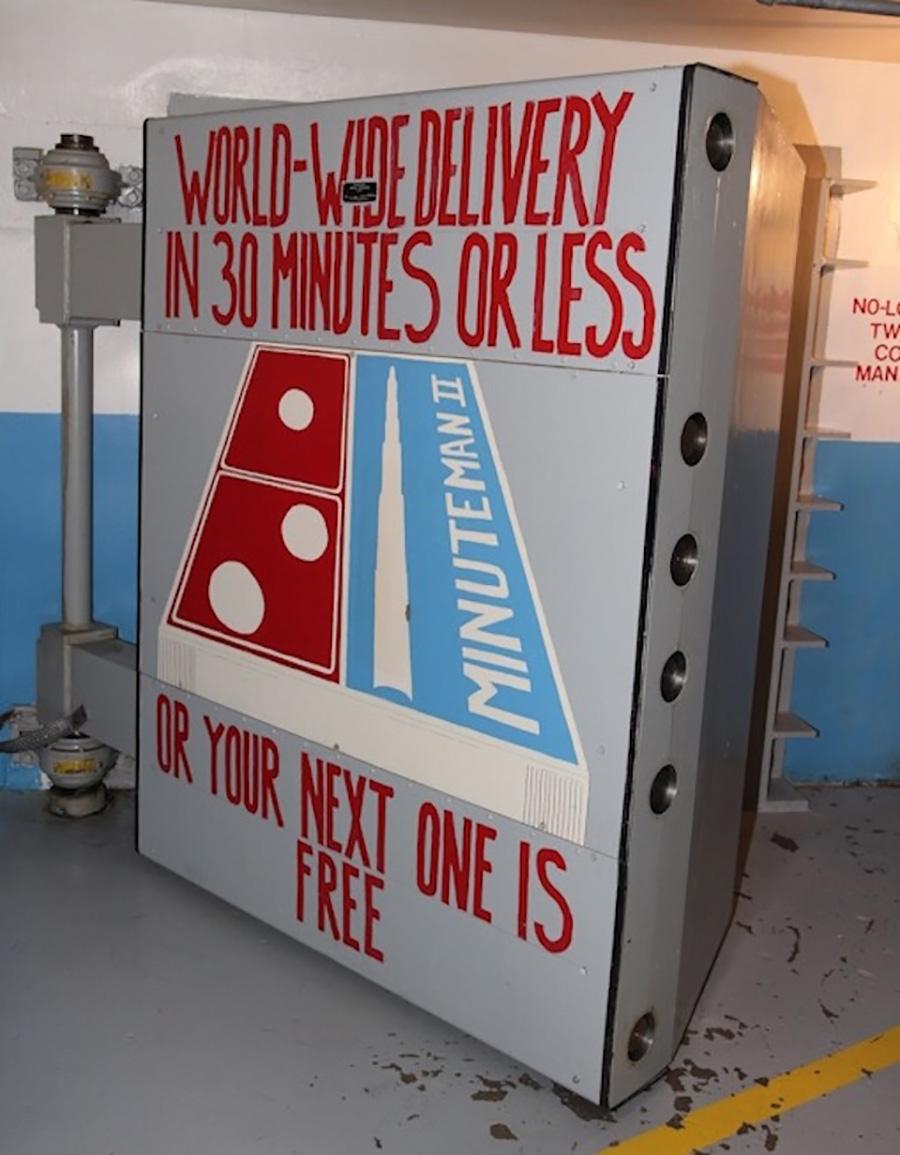
Puppies Puppies, ‘Carlos’
Oracle
4 June – 5 August 2017
The outcome of Puppies Puppies’ exhibition at the artist-run space Oracle is minimal enough, presenting a minuscule pair of what looks like keys, hanging from a sidewall. With the majority of visitors probably not that familiar with Cold War military memorabilia, the origin of the tiny objects on display in 'Carlos' might remain foreign for a while. As it turns out, the two keys are 3D printed replicas of Soviet military missile launch keys called SS-4 and their story is only disclosed through a long interview between perhaps fictional characters: former missile combat crew officer Carlos, and interviewer Forrest, in the press release. Carlos unveils his military past in the United States Air Force and his subsequent state of constant alert; he never got to use the keys to detonate a missile but the possibility of having to do it was always there. The provided press text imparts a story of existential angst and contemporary ‘prep’ culture, while decrypting the SS-4 meaning.
Main Image: Peter Wächtler, 'Kein Morgen kann so schön sein', 2017, installation view. Courtesy: Schinkel Pavillon








